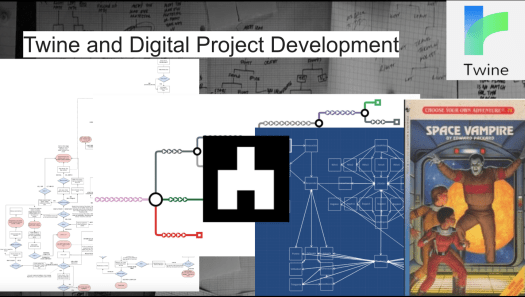In the press that followed the December 2018 release of the Netflix interactive film Black Mirror: Bandersnatch, several references were made to the use of Twine in the project’s development process. While early stages of planning utilized Post-it notes and whiteboards, the Bandersnatch team eventually turned to Twine, “which is often used to design video games with multiple story branches,” and even provided actors with copies of the script written and published in the program so “they could navigate” the various threads of the project. Many instructors and students in digital humanities, media studies, and game studies courses have gravitated towards Twine in and around the higher ed classroom, and most of this pedagogical work has focused on the immediate contexts of games and interactive fiction. Until reading the press around the making of Bandersnatch, I hadn’t thought of this software’s potential in the context of digital project development.
As an instructor in a two-year Master’s Program in Public Humanities, I’ve tried to design readings, assignments, and exercises that more immediately attend to the many professional contexts that our students tend to gravitate towards in practicums and postgraduate work: museums, archives, galleries, nonprofits, public sector work. In many of these contexts, it can be difficult to devote time, money, and staffing to wireframing, interface design, and user testing, stages in project development needed to create digital initiatives that resonate with desired audiences. There’s obviously a continued need to argue that these forms of digital knowledge production are valuable and require sustainable and ethical commitments to people and resources, and I have made these arguments in and beyond the classroom during my time at Brown. I’ve also argued that digital humanities in academic contexts often encounters challenges when it takes on digital public humanities initiatives that require expertise in digital storytelling, work that extends beyond digitization, preservation, and networked data (though these areas would additionally benefit from further considerations of the many stories audiences might tell with these digitized cultural objects). So while the particular use of Twine described here resides in the context of a graduate-level course in a Public Humanities program, my hope is that its pedagogical aims and approaches resonate with a wide range of courses invested in various ways in the creation and dissemination of digital projects.
